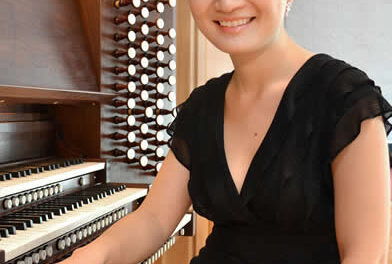Chamber Music Wilmington presented a young string quartet for its final concert of the 2011-12 Season. This superb group was the Kontras Quartet. Performing together for only a few years, they have already achieved artistry at a high level. The concert took place at Wilmington’s Church of the Servant, which offered an airy, inviting space and fine, clear acoustics.
The first work was Beethoven’s Quartet Op. 18/6, the last of this major group of pieces based on the model of Haydn. The performance of the first movement captured its humor and vitality, and displayed the bright, clear tone that was characteristic of the group throughout the program. Other qualities of the performance, also carried throughout the concert, were rhythmic precision and strong, well-defined dynamic contrasts.
The second movement was highly expressive, with an especially beautiful mysterious sound in the unison passage and a full, dark quality in the middle section. The ending was wonderfully subdued. The third movement was rhythmic and high-spirited. The fourth movement, in some ways the forward-looking crux of the piece, began in a fine sustained mood with pathos coming to the fore in the dissonances. The following German dance might have captured more dance spirit at the start, but then it found the mood very well. The following shifts were effective, including the return to the pathos of the first section of the movement. The presto ending was exciting in its headlong momentum.
The following piece was the Quartettsatz by Schubert, a single-movement masterpiece from an unfinished quartet. The playing here was intense from the start, with mostly powerful crescendos and a delicate ending to the exposition. The dance quality in the middle section was light and appealing. The one drawback to this passionate performance (also the case in the following Ravel) was the balance. This was strongly to the lead instrument, most often the first violin, to the extent that the counterlines – part of the conversational and dynamic essence of quartet music – were largely relegated to pure accompaniment.
Following intermission the group gave a glowing performance of the Ravel Quartet in F. The character contrasts of the four movements were sharply rendered: delicate and gentle in the first movement with a passionate climax; vivacious in the second with a rich, sensual sound in the middle section and crystal clear pizzicato; by turns mournful and nostalgic in the third movement, including finely drawn solos by the cello and viola and some magical sound at the end, and finally a vigorous, dynamic closing movement.
The ending to the program was Four, for Tango, by the modern Argentinian master Astor Piazzolla. This piece featured dense, rhythmic dissonance, rough-hewn energy, and the scraping of strings. There was also a more suave section, suggestive in mood of tango, along with a bit of passionate yearning, the sensual aspect of the title. But the prevailing mood was the intensive, energetic rhythms, which brought the concert to a brilliant, exciting conclusion.











